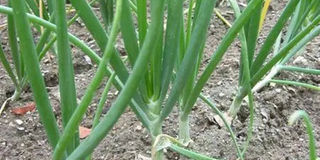Prime
Push-pull technology fights fall armyworm

What you need to know:
Cereal farmers across sub-Saharan Africa are experiencing heavy losses due to the devastation by the fall army worm.
On Wednesday, government confirmed the outbreak saying 38 districts had already been invaded. The Prime Minister, Ms Robinah Nabbanja said government had started providing chemicals to spray the worms.
Previously, the fall armyworm caused huge losses, especially of maize and sorghum, affecting food security and trade.
About fall armyworm
The fall armyworm’s lifespan, from egg to larva to moth, lasts between one to three months. It is during the larva stage that it does the most crop damage. Controlling them is a challenge because they reproduce fast and in large numbers, can migrate great distances, hide within growing leaves and have been reported to resist several pesticides.
Emergency responses by the affected countries have been based on the use of pesticides, but in most cases this has proven costly and not very effective. Various tactics – both old and new – are being tested to try and control the fall army worm in Africa. These include the use of inter-cropping technology, natural enemies, early warning systems and use of bio pesticides.
ALSO READ: Armyworms destroy 13,000 acres of crops
To combat the voracious pest, and prevent the huge losses, policymakers, extension agencies and growers could learn from the experiences of farmers in the Americas, and adapt the same to suit the smallholder African production system. This knowledge must be shared with farmers and agricultural officers. The pest, an alien from the Americas, was first reported in Africa in 2016. Starting in the Sao Tomé and Príncipe islands and Nigeria, in just two years it spread to over 38 African countries.
The speed with which they spread could be due to a few factors. Firstly, female armyworms produce a huge number of eggs (between 50 - 200 eggs per batch), and can have up to 10 batches within her lifespan. Secondly, the moths are carried by the wind across vast distances. Some have been known to travel up to 1,000km
Thirdly, numbers are not being reduced by their natural enemies which means they can multiply uninhibited. All these factors are crucial to keep in mind when managing an outbreak.
Push-pull technology
In this approach crops are grown alongside one another. Some act as a deterrent to insect pests and weeds. The system has reduced pest infestation drastically. This technology has the additional benefit of providing high quality fodder for livestock and improving yields and soil fertility.
For example, when a “trap” crop (such as Napier grass) is planted around maize rows, it attracts stemborer moths to lay eggs on it. But, because the grass is not nutritious, very few stemborer larvae will survive. In the case of fall armyworm, this has proven effective when maize is inter-cropped with drought-tolerant greenleaf desmodium and planting Brachiaria as a border crop around this intercrop. On the basis of these multiple benefits the International Centre of Insect Physiology and Ecology (Icipe) and partners are rolling out the approach in sub-Saharan Africa.
ALSO READ: Concern as armyworms wreak havoc in east
Early warning
Surveillance and monitoring are crucial to managing an outbreak. They ensure that identification happens very early, before a full outbreak, and allows for proper response management.
Traps
Pheromone traps, which use the smell of a female armyworm to attract a male, can be a useful surveillance tool. Judging by the number of moths captured, an infestation can be quickly recognised.
These types of surveillance systems are already being demonstrated within some communities. The traps can also be used for mass trappings to reduce the numbers.
Bio control
Several ecologically sustainable bio control solutions are available to farmers. The release of natural enemies is one of them.
Parasitic wasps for example can provide (up to 70 percent) control for fall armyworm by laying their eggs on or inside the fall armyworm eggs or larvae.
Icipe have also identified locally available natural enemies, such as the wasp Cotesia icipe, which has proven effective against the armyworm larvae in the lab. If these natural enemies are reared in bulk, they can be released in huge numbers in affected fields and conserved. As they multiply in the fields, they can control the pest as they feed on the pest’s larvae.




